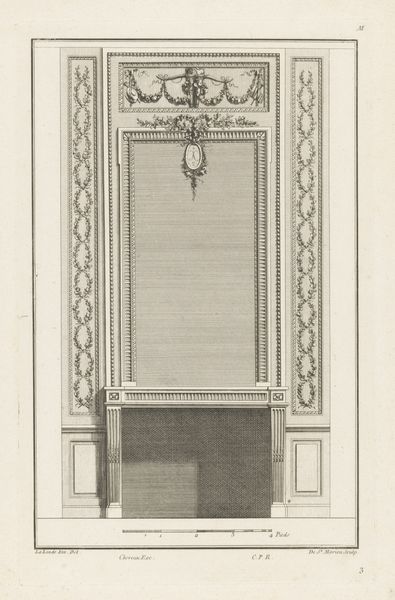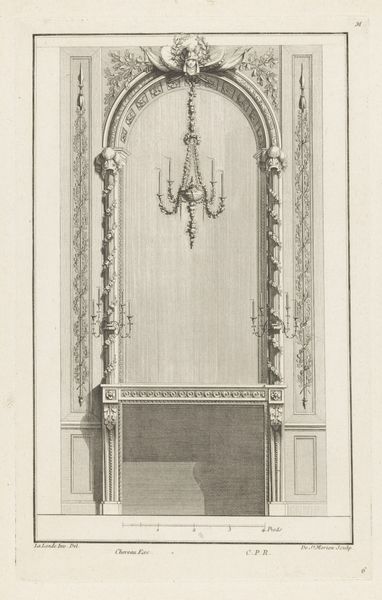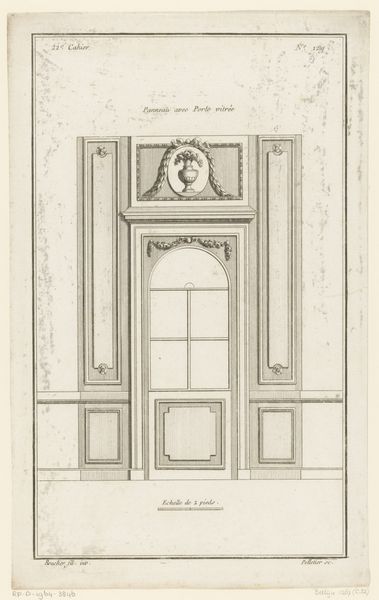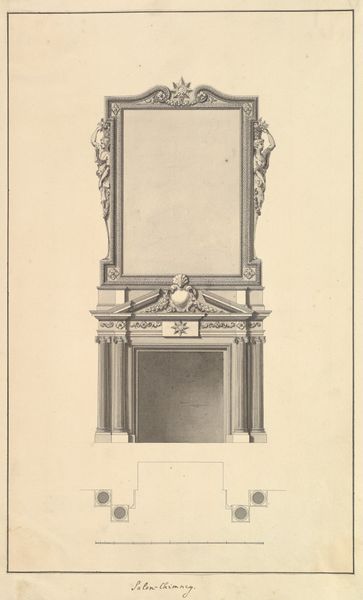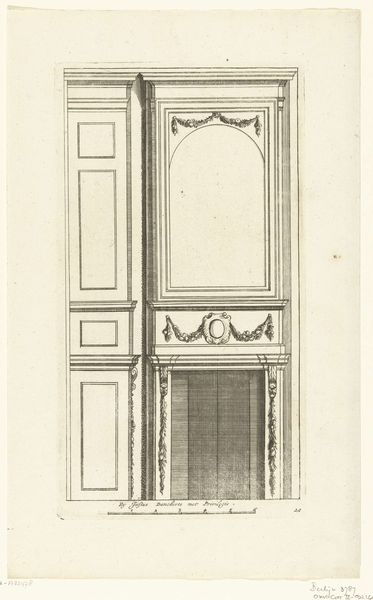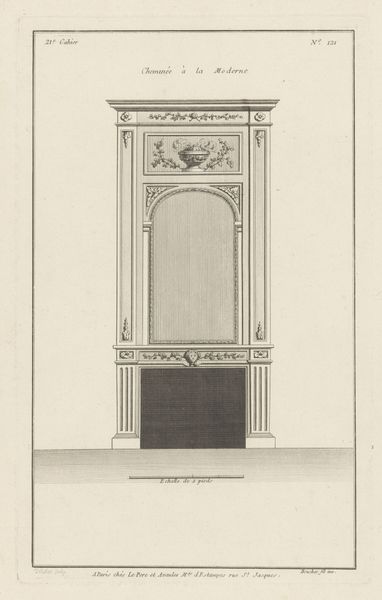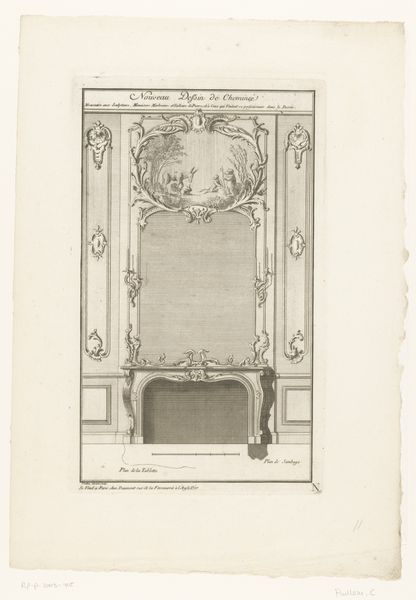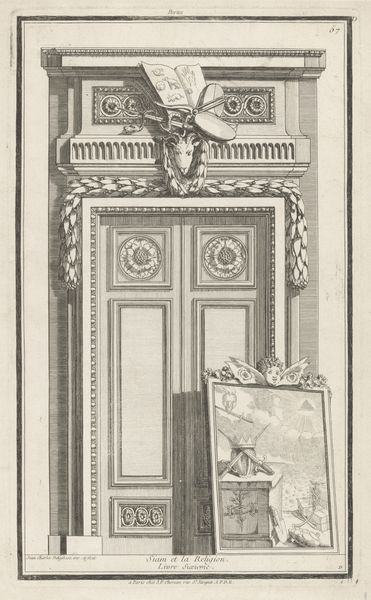
drawing, paper, engraving, architecture
#
drawing
#
neoclacissism
#
old engraving style
#
paper
#
form
#
classicism
#
line
#
history-painting
#
academic-art
#
decorative-art
#
engraving
#
architecture
Dimensions: height 341 mm, width 217 mm
Copyright: Rijks Museum: Open Domain
Curator: Looking at this drawing, its clean lines and ordered structure immediately give off an air of austere elegance. Editor: Austere, yes, but perhaps also somewhat...empty? The precision of the engraving, the way it meticulously details this fireplace, feels almost sterile, devoid of the warmth a hearth should suggest. It is, after all, only rendered through these material choices of ink and paper. Curator: Let's remember we're looking at 'Schouw met wapentrofee,' or 'Mantelpiece with trophy of arms', dating back to 1784-1785, now held at the Rijksmuseum. Its creation speaks to the rise of Neoclassicism. The drawing by de Saint-Morien depicts a formal architectural element intended for a very particular social context. It reflects power, class, and the cultural dominance of a certain era, not necessarily coziness. Editor: Right, and examining it as a material object reveals this tension clearly. This engraving is not just an image but a record, meticulously crafted with particular tools on a precise medium, intended for circulation among a specific elite audience. This image would've played a role in shaping tastes, reinforcing the cultural capital that they valued in terms of materials. Curator: Exactly. Think of the late 18th century and the French Revolution brewing. While on the surface, we see this beautiful symmetry and classic motifs; at a deeper level, we're seeing a visual assertion of order against the coming storm. The "trophy of arms" aspect—usually placed at the top with war-related objects– would point to military prowess. This, read against what we know about France at the time, tells an interesting story. Who owned it? Where? How was it meant to shape a narrative of military might during internal uprising? Editor: Indeed! It's easy to become enraptured with surface appearance of objects. Paying attention to its social conditions of production brings new meaning to "history painting", which moves away from a specific representation of historical events and focuses, instead, on the economic and social materials that create the historical moment itself. Curator: Thank you for highlighting this; in my view, this piece functions as a poignant reminder that even seemingly static designs can offer dynamic insights into identity and cultural politics of an age. Editor: I concur; by focusing on the paper, the ink, and even the hands involved in its making, we not only have access to what it represents, but how objects also communicate at the time of making and long after.
Comments
No comments
Be the first to comment and join the conversation on the ultimate creative platform.

